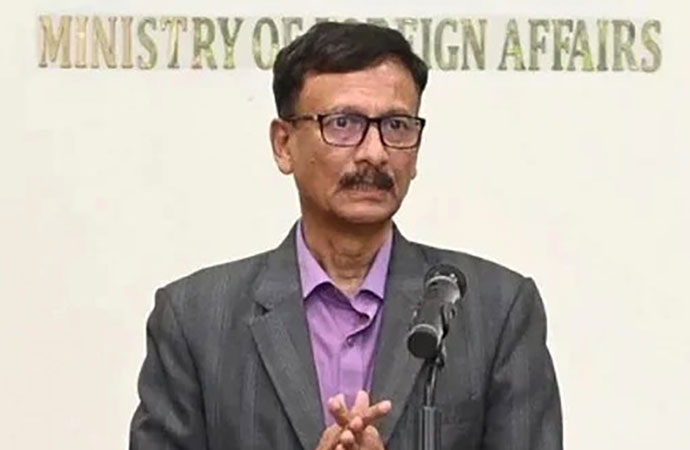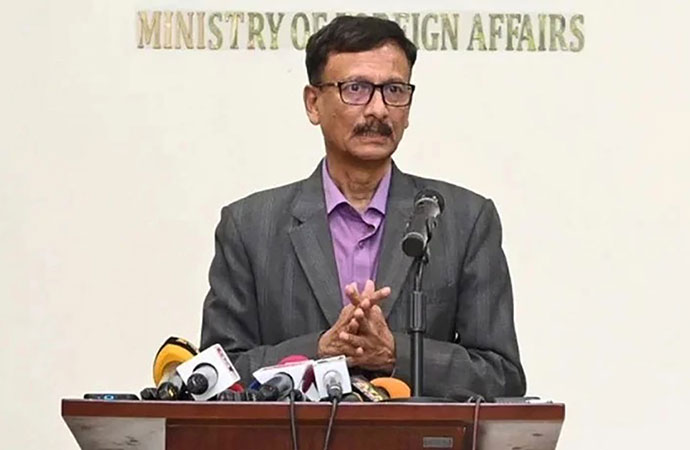Reportage

Photographer: Safiullah Antu
‘Few animals being brought in from India’
There are more than enough locally-reared cattle in the country to meet the huge demand for sacrificial animals during the Eid-ul-Azha this time.
The Department of Livestock Services (DLS) said 5,77,416 commercial farms and farmers have around 1,17,88,563 sacrificial animals ready against a demand for 1,10,00,000.
"It'll be a win-win situation for the cattle farmers and buyers as there's a surplus stock of sacrificial animals while cattle inflow from India declined significantly," DLS Director General Hiresh Ranjan Bhowmik told UNB.
He urged the Border Guard Bangladesh (BGB) to stop cattle smuggling from India to ensure the fair prices of animals and thus encourage the cattle farmers to boost the local production further.
UNB correspondents from frontier districts said cattle inflow from neighbouring India is very low this time. However, cattle import from Myanmar has marked a rise due to cheaper prices.
Bhowmik said around 10.4 million cattle, including 3.8 million cows, were slaughtered during the last Eid-ul-Azha.
He said around 11 million cattle, including over 4.2 million cows, are likely to be slaughtered during this eid as the demand for sacrificial animals may rise by five percent. "Over 7 lakh cattle will remain surplus after meeting the eid demand."
This year, the DLS DG said, 45,82,000 cows and buffalos, and 72,06,563 animals have been made ready.
A DLS official, wishing anonymity, said the cattle stock was better last year. "The number of surplus cattle was one million last year," the official said. "About a million animals were brought in from neighbouring countries."
Low Indian cattle inflow
One of the reasons for the drop in cattle inflow is the intensification of patrol along the Bangladesh-Indian border.
UNB Jashore correspondent reports that the import of Indian cattle through both legal and illegal channels is very low this time unlike previous years. Navaron corridor officials in Sarsha upazila said only 99 cows and five goats were imported legally in July.
"On average, 20-22 cattle are being imported each week through Goga and Putkhali border points," said Anjuman Ara Begum, Customs Revenue officer-in-charge at Navaron Customs Corridor.
Jashore district livestock officer Dr Bhabtosh Kanti Sarkar said 70,600 cattle have been raised at 5,800 farms in the district. The local demand for sacrificial animal is around 63,000.
Khulna-21 BGB Battalion chief Lt Col Imran Ullah Sarkar said they have intensified patrol to prevent cattle smuggling.
The scenario is the same in Sylhet. Abul Kashem, deputy director of Sylhet division's divisional livestock office, said over 35,000 farms have prepared around 2,21,000 cattle for the Eid. "It's way more than the local demand," he said.
In Cumilla, farmers have reared around 3,20,000 cows to meet the demand for sacrificial animals. As supply of cattle from India remained at a minimum, district livestock officer Nazrul Islam said he hoped farmers would get fair prices.
According to UNB Chapainawabganj correspondent, the cattle inflow from India, both legally and illegally, has dropped significantly this year.
"Over 25,000 more cattle may be imported from Myanmar before the Eid," he said.
Lt Col Mohammad Faisal Hasan Khan, commanding officer of BGB Teknaf-2, said cattle import from Myanmar has increased as there is no tension along the border. "We're supervising the cattle import activities," he said.
Giasuddin, one of the major cattle importers from Myanmar, said the price of cattle is lower in Myanmar than the last year. "Each cow is costing us Tk 8,000-10,000 less than the previous year," he said.
Additional inputs from UNB district correspondents.

























Leave a Comment
Recent Posts
Remembering Kalidas Karmakar ( ...
The art world remembers Kalidas Karmakar, a visionary whose creativity ...
An Evening with Shishir Bhatta ...
Cosmos Art Echo, the artist talk initiative of Gallery Cosmos and Cosm ...
Myanmar denies genocide, calls Rohingya crackdown co ..
Yes, of course
Earth’s average temperature last year hovered among ..
Bangladesh and Singapore: A Tale of Two Nations